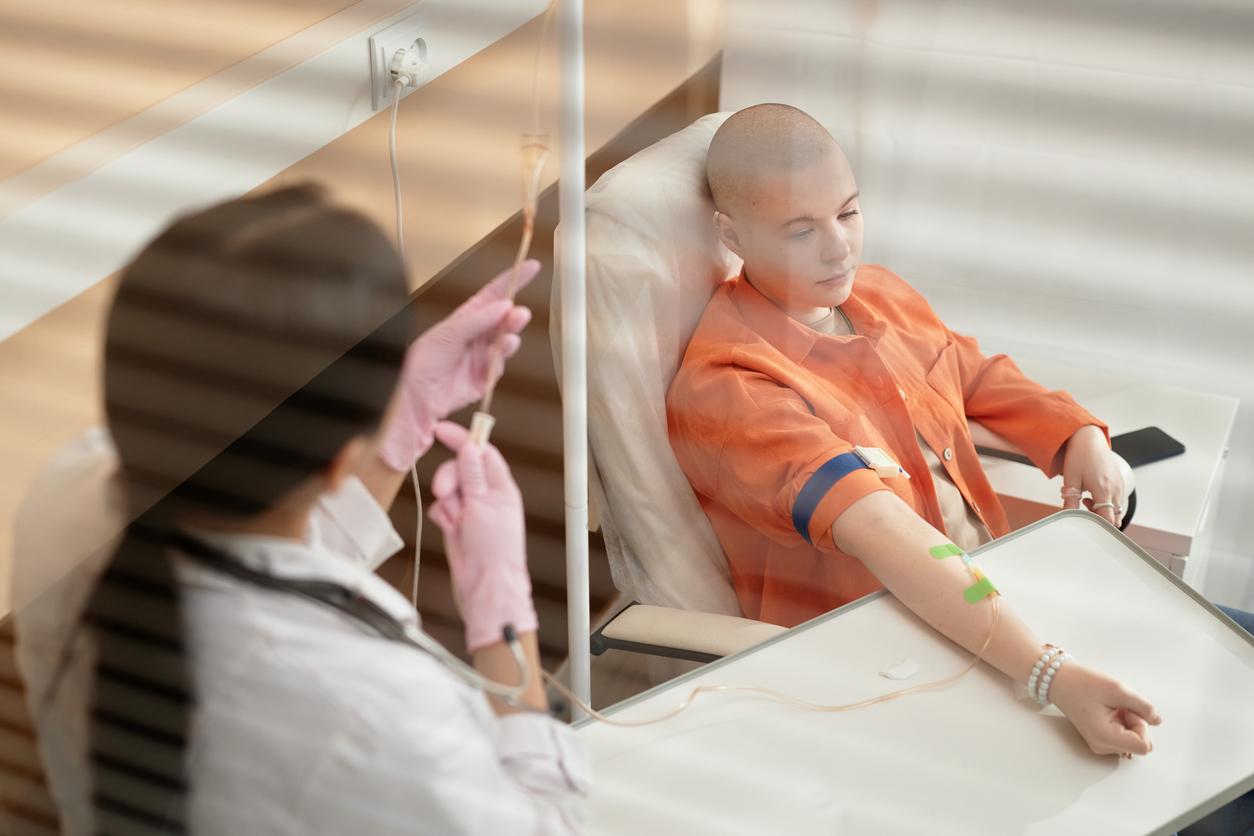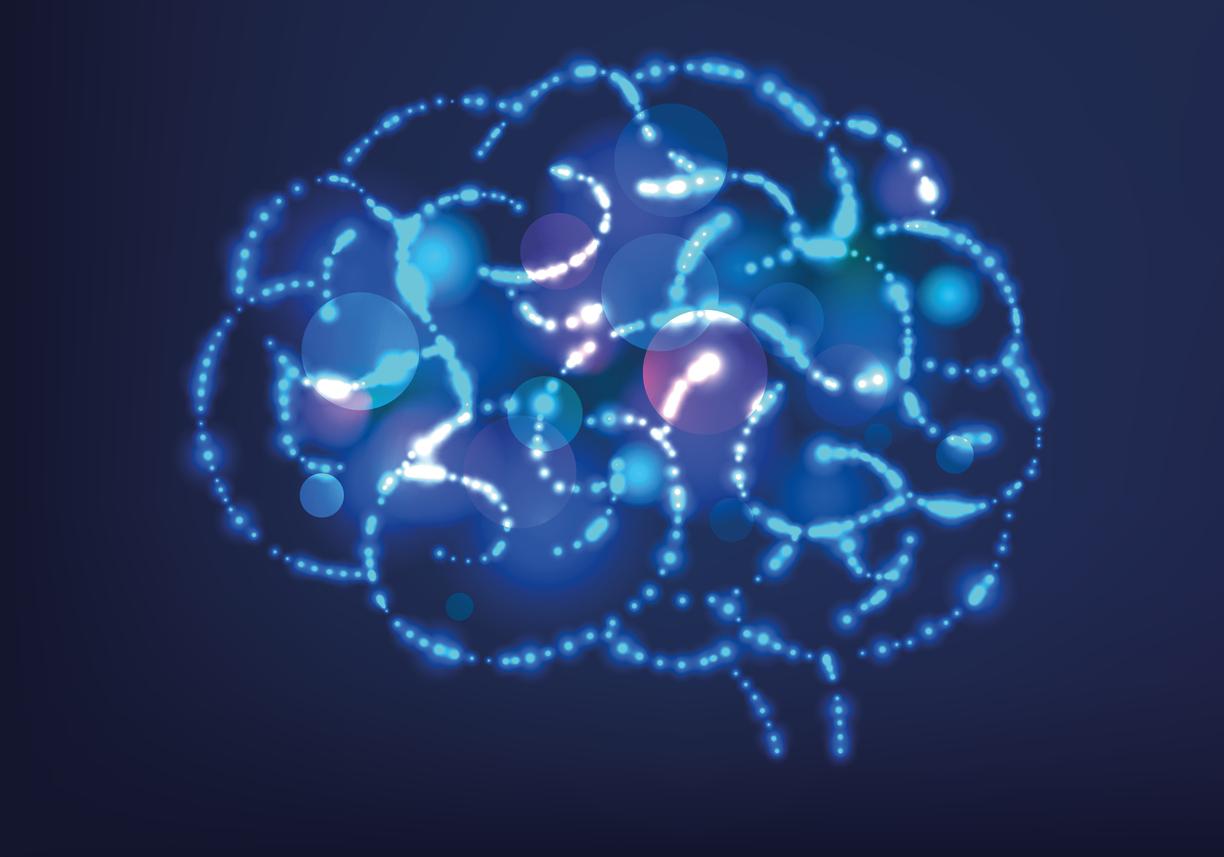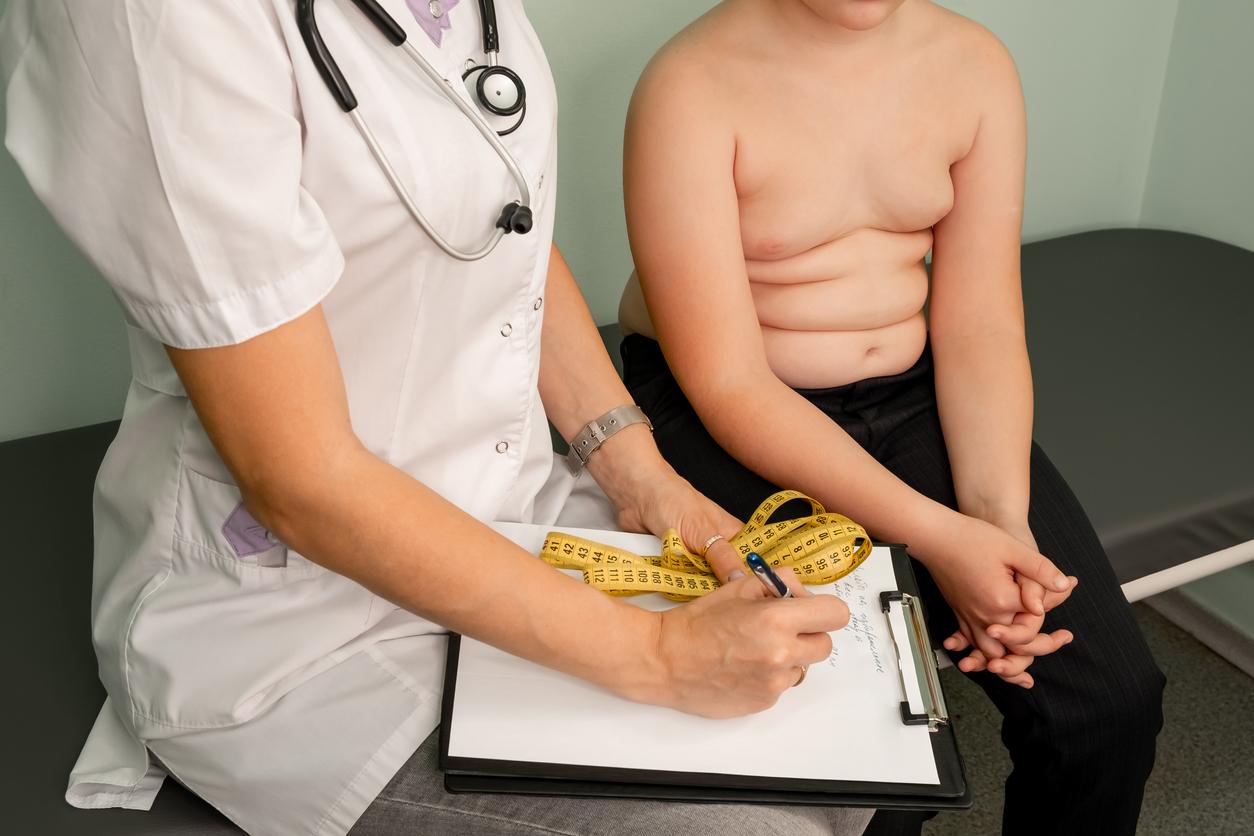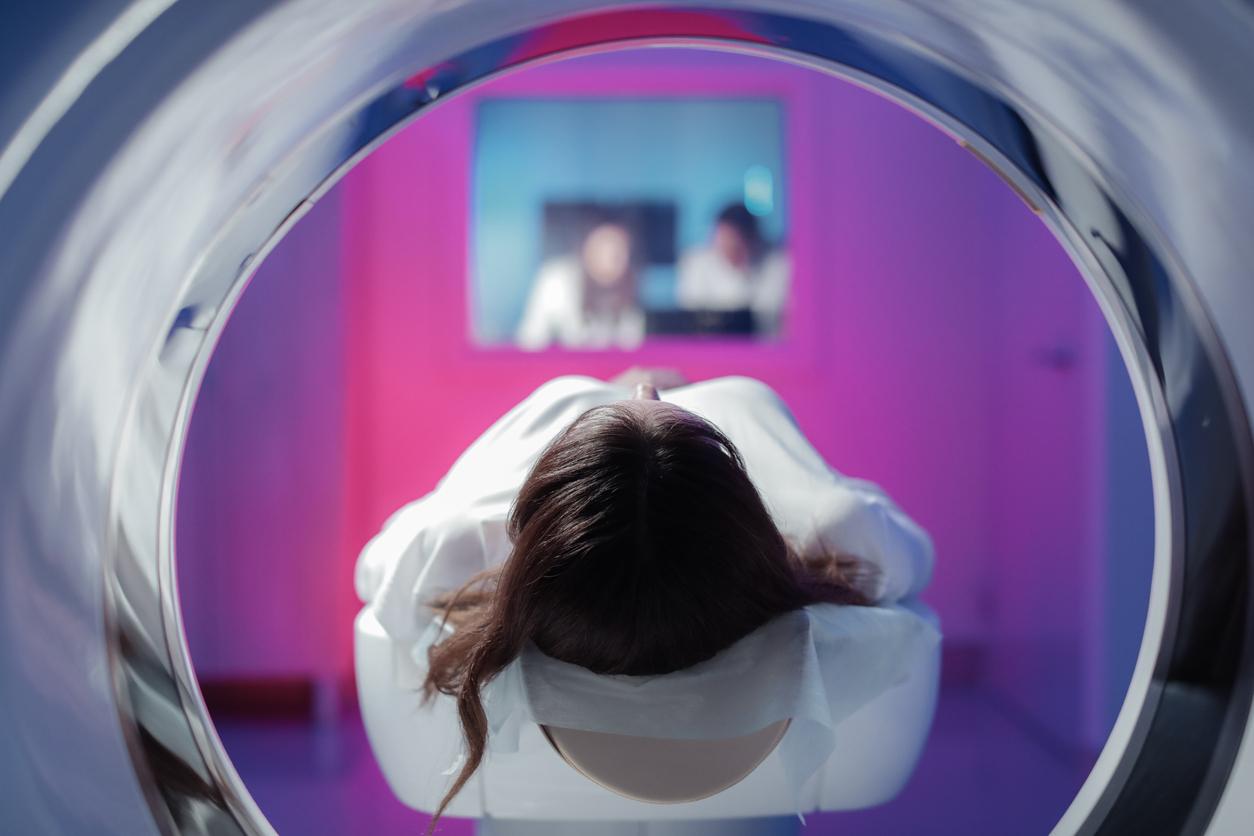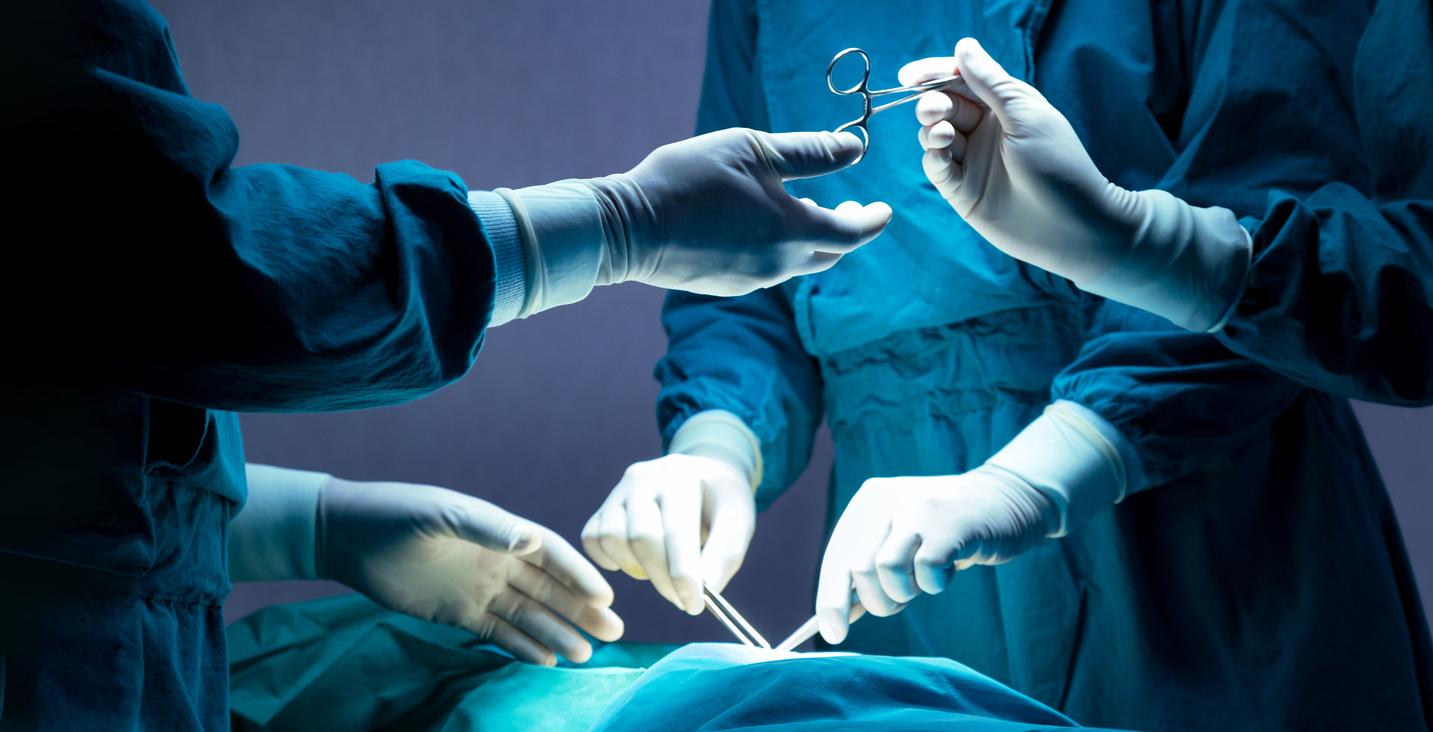For his double cancer, Bernard Tapie was treated by MRIdian, a state-of-the-art machine that combines on-board imaging and radiotherapy treatment. Agnès Tallet, head of the radiotherapy department at the Paoli-Calmette Institute, where the businessman was treated, tells us what the use of this innovative equipment brings.
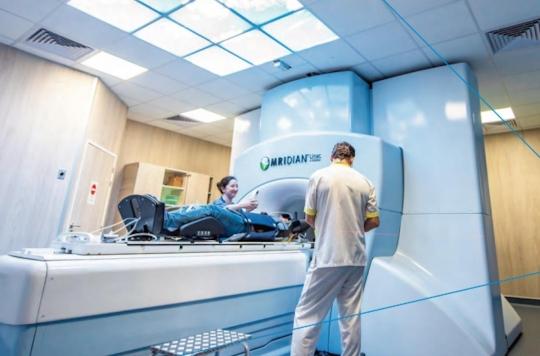
MRIdian. You may have heard this name in the media lately. This is the state-of-the-art machine with which Bernard Tapie has recently been treated for his double stomach cancer and esophagus. Manufactured in the 2000s in Silicon Valley, this revolutionary machine combines a imagery embedded type MRI to radiotherapy treatment (through particle accelerator). She arrived in France six months ago atPaoli Calmette Institute, in Marseilles, where Tapie was treated. Agnès Tallet, head of the radiotherapy department at this state-of-the-art private non-profit establishment, tells us more.
While the radiotherapy treatment itself uses the same process as usual, where this machine differs is in the on-board imaging. “MRI is not irradiating and allows us to see structures that are made of soft tissue extremely well. there are things that are difficult to see, so we have to widen our safety margins, whereas here we can see the contours of the tumor very well, and this without the need to introduce clips, an invasive technique that is to put trustees in the tumor to be able to locate it on the scan”, she explains to Why Doctor.
And to specify: “We also see better the outline of the organs at risk which are around. We will therefore be able to avoid them: we therefore reduce the quantity of healthy tissue which will be irradiated. The beam will only fire when the tumor is completely in the irradiation fields. Thus, we hope to gain in terms of toxicity and then why not increase the dose to increase the effectiveness of the treatment”.
Low toxicity
Regarding side effects, no comparison has yet been established with other treatments. On the other hand, unpublished results presented at the last European congress on radiotherapy by teams using this technology for several years reported low toxicity, reports Agnès Tallet.
Because if the device arrived in France this year (it has also just been installed in the Montpellier Cancer Institute and at the Georges-François Leclerc center in Dijon), it has been used in the United States for much longer. Developed in 2010, it was first used in St. Louis, Missouri in 2014. Today, “a twenty machines are available in the world”, specifies Doctor Tallet. In Europe, in addition to France, the MRIdian exists in the Netherlands, in Germany, to Denmark or Italy.
To be eligible for this treatment fully covered by Social Security, the patient must not have any contraindications: he must not have a pacemaker or be claustrophobic, for example. He must also have a tumor that is difficult to see on a CT scan. or subject to change from day to day.
Among them, “all hepatic tumors, whether primary tumors such as liver metastases, which we do not see or tumors affecting the pancreasprostate or cervix“, comments Doctor Tallet. “The benefit of on-board imaging is also very important for tumors which may change between two sessions or which regress during radiotherapy”.
60 patients treated with the MRIdian in Marseille
For now, it is of course still too early to determine the effectiveness of the machine on long-term patient survival. The Paoli-Calmette Institute having only begun to treat patients with the MRIdian that six months ago (60 patients have benefited from it so far), the necessary hindsight is not yet there. Moreover, this machine is very expensive: 8.2 million euros. Thus, for a generalization of this technique, “we will have to communicate on its advantages, if they are confirmed”, explains Agnès Tallet.
The United States is slowly starting to do so. And, “now that we also have some machines in Europe, it goes to need collate the results, and realize the potential interest”, she continues. And to conclude: “As far as we are concerned, we have already been able to observe an obvious benefit in terms of quality and security of treatment”.
.







